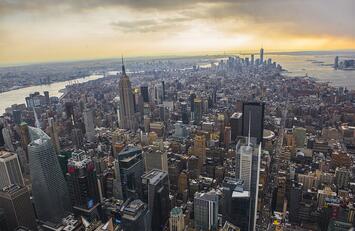
The King of Wall Street has spoken, but the peasants are not listening. Ever since the end of the lockdowns, JPMorgan Chase CEO Jamie Dimon, like many of his elite counterparts in cities from New York to Seattle, has been calling for the workers to return to their cubicles and daily commutes. The business elites have been cheered on by big-city corporate media, like The Economist. Even the White House, despite its green posturing, is pushing to get most Americans back on the road, often for long, mind-numbing, energy-consuming commutes.
Yet American workers – particularly more seasoned employees – are refusing to kowtow. The shift to companies offering some remote work seems to be on the increase. As Stanford researcher Nicholas Bloom notes, the number of job postings for remote-friendly roles is hitting record levels.
In fact, according to the Flex Index, the share of people in the office full time dropped from 49 per cent in the first quarter of 2023 to 42 per cent in the second quarter. A Gallup survey found that only two in 10 workers in jobs that can be done remotely are working full-time in the office.
This is not merely an American phenomenon. In London, office attendance is still down 35 per cent on pre-pandemic levels. Canary Wharf in east London is being hit particularly hard, as employers like HSBC and Barclays downsize their operations.
All this suggests a dramatic comedown for many of our most elite business districts. North America’s largest central business districts are all in distress. Overall, office buildings in the 10 leading metro areas remain roughly 50 per cent occupied. And when workers do turn up at the office, it is usually midweek. On Mondays and Fridays office visits fall by around half.
In some ways, this reverses the patterns of the industrial age, as portrayed in Friedrich Engels’ The Condition of the Working Class in England or in Jacob Riis’ How the Other Half Lives. As factory labour swelled, and artisanal industries declined, workers left their more bucolic towns to live in cities, as Engels put it, amid ‘the most distressing scenes of misery and poverty’.
Such horrid conditions were eventually addressed in the mid-20th century, as social democrats, unions and reformers promoted both sanitation and also the dispersal of people and companies to the less congested periphery. In 1950, the core cities accounted for nearly 24 per cent of the US population; today, their share is under 15 per cent. Suburbs have accounted for about 90 per cent of all US metropolitan growth since 2010.
The decline of the office represents a threat to the very economic function of cities. The so-called transactional city, a phrase coined by Jean Gottmann in 1983, was built around high-rise office buildings. From those perches, elite professionals were to occupy ‘the commanding heights’ of the economy.
Read the rest of this piece at Spiked.
Joel Kotkin is the author of The Coming of Neo-Feudalism: A Warning to the Global Middle Class. He is the Roger Hobbs Presidential Fellow in Urban Futures at Chapman University and Executive Director for Urban Reform Institute. Learn more at joelkotkin.com and follow him on Twitter @joelkotkin.
Photo credit: Anthony Quintano via Wikimedia under CC 2.0 License.












